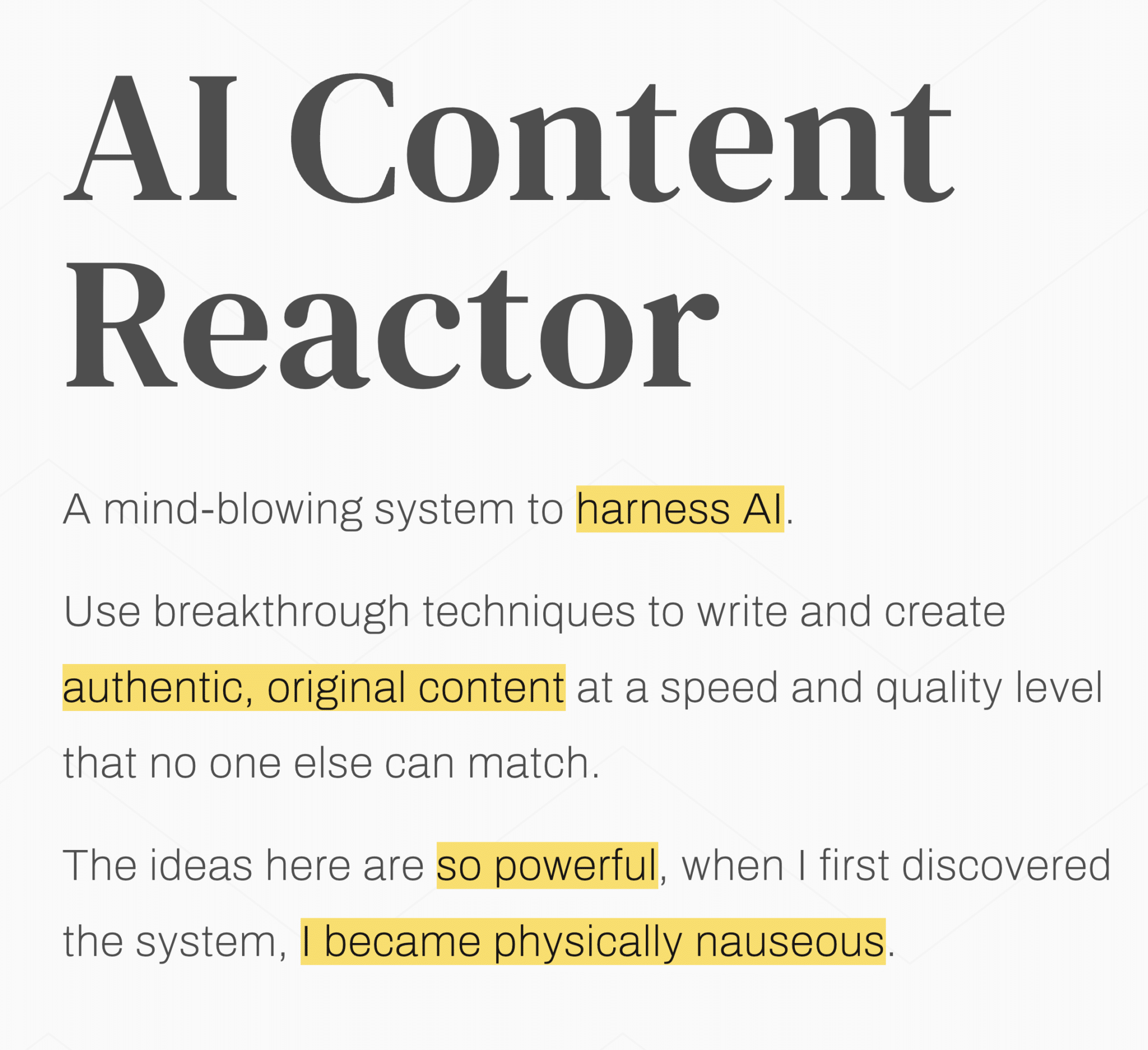I’ve been in the Google search game longer than I care to admit…let’s just say I was around when keyword stuffing and hit counters were considered “advanced tactics.” Google had been nudging us toward user-focused content for years, but intent-driven SEO finally hit the fast lane when the search engine started embracing artificial intelligence.
This was the moment we could no longer ignore the meaning behind the optimization.
Table of contents
Search reaches a turning point, moving from keywords to context.
The shift from mechanical, keyword-stuffed SEO to more human-centered, intent-driven strategies began around 2011 with the rollout of the Panda update. Panda targeted thin, low-quality content and keyword stuffing (which wasn’t considered best practice among seasoned optimizers anyway, even if it dominated for a while).
Then, in 2013, Google rolled out Hummingbird, its first major step toward understanding search intent and natural language. The change was simple but sent waves through the search industry.
Hummingbird introduced semantic search capabilities, which means the search engine could understand the context behind complex or conversational queries. Voice assistants like Siri became more popular (and continue to grow), encouraging users to search in full, conversational questions, something Hummingbird was designed to handle.
Example: Instead of “clean hardwood floors,” we might search “What’s the best way to clean hardwood floors without vinegar?”
Hummingbird didn’t necessarily punish bad practices as much as it changed how results were chosen. It was a core algorithm overhaul, laying the foundation for even more advanced systems like RankBrain in October 2015 and BERT in 2019.
And while we know the term “game changer” is overused, RankBrain actually was. It marked a shift from optimizing for keywords to optimizing for meaning. Suddenly, content that genuinely answered questions outperformed pages that simply repeated phrases.
We’ve had “tweaks” to the core algorithm, but RankBrain redefined what it meant to optimize. Marketers had to abandon rigid keyword strategies and focus on intent, clarity, and usefulness. We went from reverse-engineering search phrases to solving problems.
Google’s smarter now, and your SEO strategy should be, too.
I still remember building pages in the late 1990s where the goal was to rank for “cheap shoes” by repeating that exact phrase several times. Fast forward to now. Google’s looking for whoever offers the best advice, the clearest path to the answer, or the most helpful experience (something we’ve explored before when discussing Google’s emphasis on E-E-A-T). I couldn’t be more excited about that evolution.
If you’re still optimizing only for keywords and not for how real people search, you’re leaving opportunity on the table. Google’s systems increasingly prioritize content that solves user problems instead of matching phrases. RankBrain wasn’t just a new tool – it was a new mindset.
Let’s take a closer look.
What is RankBrain, and why does it matter for your online business?
Publicly announced by Greg Corrado, a senior research scientist at Google, RankBrain was developed by the Google Search and Google Brain teams. It was Google’s first use of machine learning in search and part of a broader effort to interpret unfamiliar queries. Corrado noted that it became the algorithm’s third most important ranking signal shortly after its launch.
The goal was simple and lofty – to help Google understand the intent behind search queries. Instead of basing results entirely on exact keyword matches, RankBrain used mathematical vectors to interpret meaning and context, making search results more relevant even when the query was vague, long, or conversational. Much like today’s natural, voice-based search.
The marketing perspective shifted to context.
Before this change, SEO was largely about matching specific keywords. Marketers would obsess over phrase frequency and precise targeting. However, Google needed a way to handle search queries it had never seen before, especially with the growing use of conversational and voice search. I remember those days… I know we’ve written an article or two on the topic.
While Google has never confirmed the direct use of clicks, dwell time, or return visits to judge relevance, experiments and patents suggest they’re used in aggregate or indirectly to train systems like RankBrain. Suddenly, long-tail phrases, natural language, and semantic depth became critical. Content had to answer the user’s question, not just repeat the query.
RankBrain changed the keyword strategy game.
As I mentioned above, RankBrain moved the industry away from tactics like keyword stuffing and exact match targeting. It uses vectors and patterns to understand meaning instead of relying solely on keyword matches. This shift means:
- Natural language understanding improved dramatically.
- Exact-match keywords are no longer the holy grail.
- Semantic depth and topical relevance became critical.
For example, if someone searches for “how to fix a leaking shower quickly,” Google now understands that the user wants clear, fast, actionable plumbing advice. Content optimized only for “fix leaking shower” may get outranked by those offering step-by-step guides, tools, or even video content that better matches the user search intent.
RankBrain was just the beginning.
This shift paved the way for even more sophisticated AI systems like BERT and MUM, which further expanded Google’s ability to process language and understand intent.
- BERT helps Google understand nuanced relationships between words in a sentence, especially for longer or more conversational queries.
- MUM (2021) goes further, drawing connections across languages, formats, and sources to deliver multi-dimensional answers.
Together, these systems represent Google’s ongoing evolution from a keyword-matching engine to a context-driven conversational system. The original machine learning layer remains a core part of this progression, helping interpret unfamiliar or ambiguous queries with greater accuracy.
Here are 5 practical SEO adjustments for the RankBrain, BERT, MUM, AI+ era.
What do you actually need to optimize for the era of conversational search? Here are five adjustments you should make now, if you haven’t already.
1. Focus on user intent.
Your content must answer the real need behind a query. Ask yourself:
- What is the user really trying to accomplish?
- Does my content solve that problem thoroughly and clearly?
Example:
If someone searches “best small business accounting software for beginners,” they’re probably not looking for a list of products. Not really. What most searchers are looking for is easy-to-use, affordable options with a gentle learning curve (of course, there are always the ones that want to do every inch of research themselves).
A post that includes setup tutorials, comparison tables, beginner tips, and pricing breakdowns will likely perform better than one that simply lists 10 tools with minimal explanation.
2. Write for people, not just the bots.
Use natural language. Avoid robotic keyword repetition. Think about how people search and speak, especially with voice search growing.
3. Improve user engagement (and dwell time).
While Google hasn’t confirmed using dwell time as a direct ranking signal, it does reward content that keeps users engaged. Ensure your page:
- Loads fast on all devices
- Has clear, well-structured headings
- Uses relevant images, videos, or interactive elements
- Offers a strong next step or CTA
4. Cover topics with depth and context.
Use related terms and semantic keywords to build topical authority. For example, if your article is about RankBrain, include terms like:
- search engine algorithm
- important ranking
- relevant search results
- optimize for RankBrain
- Google’s RankBrain
- machine learning
In-depth information builds context that Google – and users – can understand.
5. Don’t ignore technical SEO.
I know my long-time friend and web developer will like this addition, but it’s true… Ensure proper indexing, mobile-friendliness, schema markup, and internal linking to keep Google’s AI systems happy. These will also help those same systems crawl, interpret, and prioritize your content more effectively.
How does RankBrain influence search now?
Let’s say someone types: “Best way to keep deer out of a vegetable garden.”
Old-school SEO might suggest targeting “deer repellent vegetable garden.” But RankBrain interprets this search differently. It looks for contextual, helpful content: maybe a post that includes fencing tips, natural deterrents, user success stories, and comparisons of different methods.
The more relevant and comprehensive your content, the more likely Google will recognize it as the best answer, even if the exact keyword isn’t used.
Does RankBrain still matter?
While newer systems like BERT and MUM have taken on broader responsibilities, RankBrain still plays a foundational role in how Google’s algorithms process and prioritize content, especially in helping Google interpret unfamiliar or ambiguous queries.
Google’s ranking system is a complex ecosystem of many different algorithms and machine learning systems that work together to evaluate:
- Query intent (What is the user actually asking?)
- Content relevance (Does this page answer the question?)
- Content quality (Is the information trustworthy and helpful?)
- Contextual signals (Where is the user? What device are they on?)
- Page experience (Is the page fast, mobile-friendly, secure, etc.?)
Some of the key components in this ecosystem include:
- Crawling/indexing systems: Discover and store web content
- RankBrain: Understand unfamiliar or ambiguous queries using vectors
- BERT: Understand nuanced language and word relationships
- MUM: Understand content across languages, formats, and complex tasks
- Neural matching: Match queries to pages conceptually, even without keyword overlap
- Spam detection systems: Filter out low-quality or manipulative content
- Core updates: Periodic broad adjustments to multiple ranking signals
- Helpful Content System: Promote content that’s helpful to people, not just SEO’d for search engines
If you understand how RankBrain works and fits into Google’s layered ecosystem of algorithms, you gain deeper insight into how Google is continuously evolving and how your SEO strategy should, too.
Final Thoughts
The industry was used to updates, but RankBrain was more than an update; it was a mindset shift. It moved us from keyword-centric SEO to intent-driven strategy. If your strategy still clings to old methods, you’re leaving traffic and trust on the table.
By aligning your content with user behavior, writing in natural language, and embracing semantic context, you’re not just optimizing for RankBrain; you’re optimizing for the future of search.
Want to turn search queries into conversions?
At Level343, we specialize in future-facing SEO strategies. Let us help you optimize for RankBrain, BERT, MUM, and whatever’s next so your content doesn’t just rank; it resonates. Contact us today to discuss your needs.



































